.jpg)
Scar Faces, West Coast Road
“It is horrifying that we have to fight our own government to save the environment.”
~ Ansel Adams
Enviro reprise
This post has much in common with my travelogue recounting the weird and wonderful sights of Washington’s Olympic Peninsula, not least the state of one of the Pacific Northwest’s core industries: logging.
If you’re not into the politics of Big Timber, you might want to skip ahead to the photo gallery, but the survival of these extraordinary, photogenic landscapes and their dependants hinges on the outcome of the discussion.
As I wrote last week, the challenges of a trade well into the “guts and feathers” of an over-exploited resource transcend borders, just as this ecoregion, described by bio-regional advocates as Cascadia, ignores man-made state boundaries. (In this context, first people’s families divided by those borders did not suddenly cease to be related).
Historical roots
Historically, land-use decisions have favoured transnational timber interests over most other considerations, as examined in investigative reports like Will Koop’s From Wisdom to Tyranny: A History of British Columbia’s Drinking Watershed Reserves. Such decisions reverberate for centuries through ecosystems and dependant communities.
One recent deal involved the release of 28,000 hectares of timberlands from tree farm licences held by Western Forest Products. The suspect deal, swung by minister of forests at the time, Rich Coleman, without consultation, allowed the corporation to sell the land for development, leading to land-use battles in communities adjacent to the 47-kilometres Juan de Fuca Marine Trail, which links a series of spectacular beaches between Botanical Beach, near Port Renfrew, and China Beach, to the south.
Over the last couple of years, along the West Coast Road leading to Port Renfrew, evidence of this deal has emerged in the form of ugly roadside clearcuts. I’m no expert on what logging practices should look like on private or public lands, but these industrial scars, to my eye, show no respect for the environment. Who, for instance, decides that riparian zones along small feeder streams are not worthy of protection from backhoes, bulldozers and chainsaws?
A glamping I will go
This route took me last weekend to a deluxe “glamping” escape at Soule Creek Lodge, perched on the (previously-logged) heights of San Juan Ridge, above the inlet of Port San Juan and the town of Port Renfrew, the southern terminus of the world-famous West Coast Trail (not connected to the aforementioned Juan de Fuca Marine Trail).
For four years, during my stint as Vancouver Island route coordinator for BC Randonneurs Cycling Club, I ran an event glibly dubbed “The Tsunami,” a 300km marathon cycling event that followed this highway, from Victoria to Port Renfrew and back, with the route modified after the former logging road west from Cowichan Lake to Port Renfrew was paved, and the Pacific Circle Route became the focus of tourism promotion.
The drive in, along the winding, often bumpy, road was accompanied by torrential downpours that continued to drum on the skin of the rented yurt throughout Friday night. “That’s what the earplugs [thoughtfully placed on the bedside table] are for,” our affable host, Jon Cash, told me next morning. I love the sound of rain, and the smell of a baptized forest.
As the same intermittent downpours continued through Saturday, armed with a LensCoat™ RainCoat, I navigated the potholed track up along the Gordon River to Avatar Grove, another example of what I call a “tree museum,” among the clearcuts of Vancouver Island. This particular anomaly was preserved by a campaign initiated by the the Ancient Forest Alliance around “Canada’s Gnarliest Tree” – a giant redcedar.
Recent initiatives have constructed stairs and boardwalks, as much to protect tree roots from the footfall of thousands of pilgrims drawn to this ancient cathedral than to ease the rigours of the hike. I’d visited this venerable representative of the remaining 10% of Vancouver Island’s old growth on my last trip (see gallery below), so I decided on this rainy occasion to forgo the steep and slippery trail up to its burly base.
.jpg)
Dressed for Rain
Reborn sun
On Easter Sunday — my birthday — the sun’s resurrection illuminated the ridgeline. Mist swirled up from the inlet to float among treetops. Mountain peaks to the north wore a skiff of new snow. Hummingbirds buzzed the yurt.
My wife and I packed hurriedly, after a delicious breakfast, courtesy of Chef/Owners Tim and Jon Cash, who advised that the best tide pools of Botanical Beach would remain above the rising tide until around 10:30. Though I’d checked my tide-table app, which showed the tide rising from a low at 8:30 to high at 2:10pm, local knowledge can’t be beat.
As it turned out, I decided to concentrate my photographic attention on the area just north of Botanical Bay, having photographed the fabulous circular sandstone pools on another occasion. Scrambling over the rocky shore, I set up the tripod to make long-exposure tidal shots, as if the world needs any more of these ubiquitous images! The minutes turned into hours, as I calculated exposures by trial-and-error. I’d neglected to charge my iPhone, which includes a long-exposure calculation app.
On the return hike, I noticed for the first time that park superintendents access lower toilet facilities by truck, one of which was just leaving, as I reached the wider junction. A little further up, I bent down to pick up a piece of litter, dry and therefore recently dropped. The page, torn from a small spiral notebook, contained a message from one park attendant to another, alerting that “at least 6 cars have been broken into in the parking lot.”
Telling Amanda to spare her bionic knee, I sprinted as fast as my compromised right ankle would allow. I know better than to leave anything visible in a car, but I had stashed an expensive gimbal head (in a secret spot). Arriving at the trailhead winded, I was relieved to find the car unviolated. Perhaps the note was dated.
No such luck for six cars to the left. I felt a mixture of sympathy for the poor buggers who would return from a beautiful day on the beach to find their valuables missing and car windows smashed, and anger for the miscreants responsible for this outrage.
Bad news travels fast. Back at the lodge, our hosts had already heard. Evidently, thieves prowl the parking lots along Highway 14, with China Beach being the most frequent target. A stop there on our return found friends of one of the victims, fellow adventurers on the Juan de Fuca Marine Trail, who had lost two laptops and other valuables.
This is a scourge that local businesses are eager to eradicate.
“As paradoxical as it may seem, the fact that West Coast old growth may not be seen outside of a park for centuries—if ever—is just fine with many commercial loggers. To them, these trees are worth more dead than alive. Out here, the frontier age has not ended; Weyerhaeuser [since departed buyer of B.C.’s Macmillan Bloedel holdings] is not just in the wood products business, after all, they sell real estate in the form of raw land, freshly cleared for settlement. Within the industry, this practice is known as “log it and flog it ….”
John Vaillant, p. 223, The Golden Spruce: A True Story of Myth, Madness and Greed
Joining other guests in the main lodge that evening, faces glowing from sun exposure, we enjoyed a terrific salmon and trout supper, preceded by a salad and topped with a dessert of homemade ice-cream paired with fruit cobbler, again via the culinary arts of Tim and Jon.
As the Cash brothers will attest, the attractions of these forest giants and the adjacent beaches are key to their business’ survival. Yet, it seems to me, such ineffable joys are no match for the intrusive clear cuts that encroach upon the area from every direction.
I’ve been around these parts long enough (he says, assuming his grizzled old-timer persona) to remember Port Renfrew as a bustling lumber town, also with a modest fishing fleet. I recall a conversation with a fisherman at the wharf, who told me, “It’s over — the fishing and the logging.” The original Port Renfrew Hotel, before it burnt down (its wallpaper of international paper money consumed by the flames), quenched the thirst of fallers and fishers, and a growing number of weary hikers, fresh from the rigours of the West Coast Trail.
It is the latter, along with urban escapees like me that now form if not the backbone then the wishbone of Port Renfrew’s new economy. Yet one must still be careful talking about the seeming incompatibility of status quo resource extraction with the town’s emergence as a resort destination.
Chatting with local developer Rose Betworth, of Three Point Properties’ Wild Coast Cottages, a tourist mecca springing up along the bay, I broached the subject.
“Logging puts bread and butter on the table. My father was a logger,” she replied. Nonetheless, it appears that at least a portion of her family’s bread and butter now comes from selling real estate to out-of-town holidayers.
Not an “enviro-nut”
If any clarification is due, I’m not opposed to logging — that would be senseless, given the fact I’ve worked as a cabinet maker, log builder, and continue to derive great pleasure in using wood for home improvements, and making picture frames from recycled old-growth Douglas fir.
What I’m strongly opposed to is the continued liquidation of our last great temperate rain forests and wholesale razing of second-growth trees to feed an industry that now exports up to 40% of the resource as raw logs, leaving little benefit to local communities. Source.
Aside from the uncounted rewards of unexploited forests, both pecuniary and spiritual, imagine if this resource was properly regulated and processed locally, rather than sent to China to be manufactured into products we buy back; what if the profit in “value-added” was added here? It was for decades, until government released industry from its obligation to process timber harvested from “tree-farm licences” in B.C. That, in turn, opened the flood-gates to raw log exports.
One is left to wonder when the loss of our secondary industries will lead to an impoverished population who can’t afford to buy products manufactured from our timber, in Asia, let alone recreational properties.
Again, these are larger questions — questions that confound communities the world over. They are certainly ones I’m given to contemplate from the relative comfort of my oasis in a land still gifted with extraordinary natural beauty and wealth. Hopefully, the memory of what organized labour and community activism can accomplish will prevail.
Now, on to the photos.
Conflict between tourism and private forest land management | Government indifference to old-growth destruction















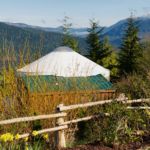
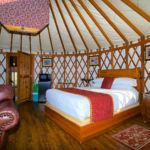
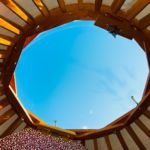
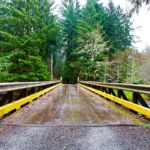
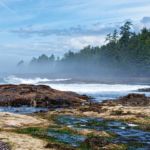
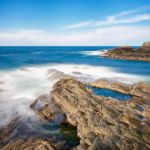
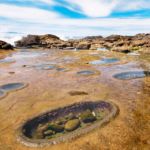
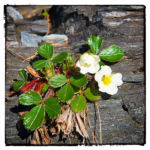
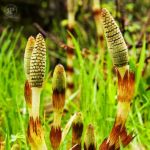
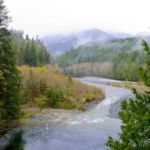
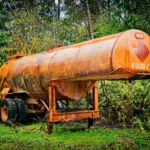
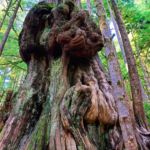
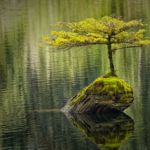
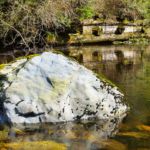
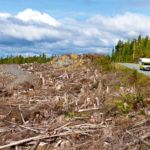
Jon Cash - Hi Raymond, it’s Jon Cash, former owner of Soule Creek Lodge. This is the first time I’ve come across this wonderful story (thank you for all the kind words). We just sold the Lodge and 160 acres back in November to the Pacheedaht First Nations hoping they will bring it to the next level and approached them first when we decided to sell thinking they would be the ideal people to care for the land. Alas as it turns out BC timber sales has put up on the auction block almost all of the Old Growth forest between the Lodge and the Juan de Fuca Marine Trail with the Pacheedaht the most likely (almost certainly) will have the “winning” bid. Makes me very sad and I know a lot (having worked (and continue to) with many Environmental groups to save Ancient Forests on Vancouver Island and BC in general. It’s all very very complicated but thought you may like to know. Best to you and yours and thank you again for this wonderful bit of writing and photography. Sincerely, Jon Cash.January 16, 2020 – 2:33 am
Raymond Parker - Nice to hear from you Jon. I’m sorry, however, that it is under such circumstances. Living in BC at this time can be depressing as we watch the continuing despoliation of its wonders.
I moved closer to Port Renfrew recently and though I now look out over this magnificent West Coast landscape and the Strait of Juan de Fuca, it’s impossible to ignore what we are losing every day, just as it’s impossible (unless we hide under a rock) to ignore the unfolding stories of criminality we like to believe only exist in “undeveloped” countries. No surprise to you and I that the same names arise when we follow the smell of corruption.
My heart is heavy with the knowledge that I’ve gathered over most of 50-years living on this fantastic coast. I don’t have any answers other than if we are to survive we must find some way to defeat the gangster economy.January 16, 2020 – 9:12 am
Kathy - A very thoughtfully written post – I enjoyed all of it, Raymond! Super shots as well –April 8, 2015 – 8:57 pm
Raymond Parker - Thanks very much, Kathy. I love this coast so much. We are gifted to live here. It is my obligation to tell my story, from my perspective, in words and pictures. I welcome other perspectives.April 8, 2015 – 10:00 pm
Lynn Hirshman - Some of this is heartbreaking…and it’s been going on for years. Folks around here are up in arms about the Forest Service doing some selective logging to create firebreaks, whining about the “clearcuts.” I tried telling them about REAL clearcuts — but I may have to show them these photos to get them to see….April 8, 2015 – 4:22 pm
Raymond Parker - Yes Lynn, it’s hard to watch. Rationalization is a strange beast. Politicians do it for a living, but it’s harder to understand how people who don’t benefit fall for the mythology.
The “clearcut” shot I chose actually doesn’t illustrate the depth of the destruction, but I wanted to include the road.
Basically, BC is one big liquidation sale.April 8, 2015 – 8:42 pm